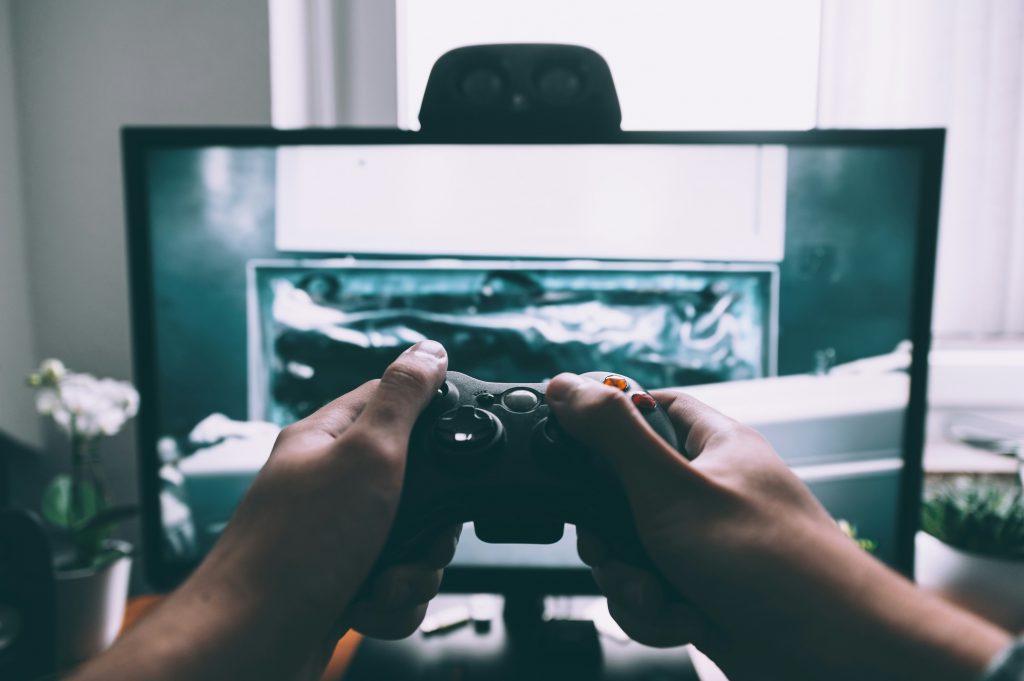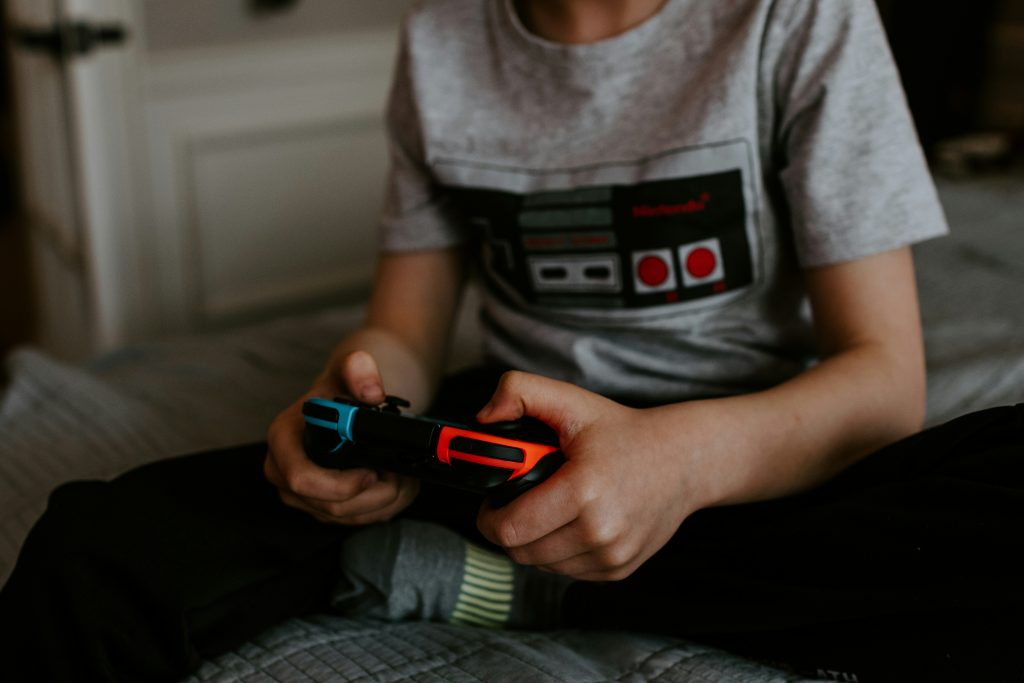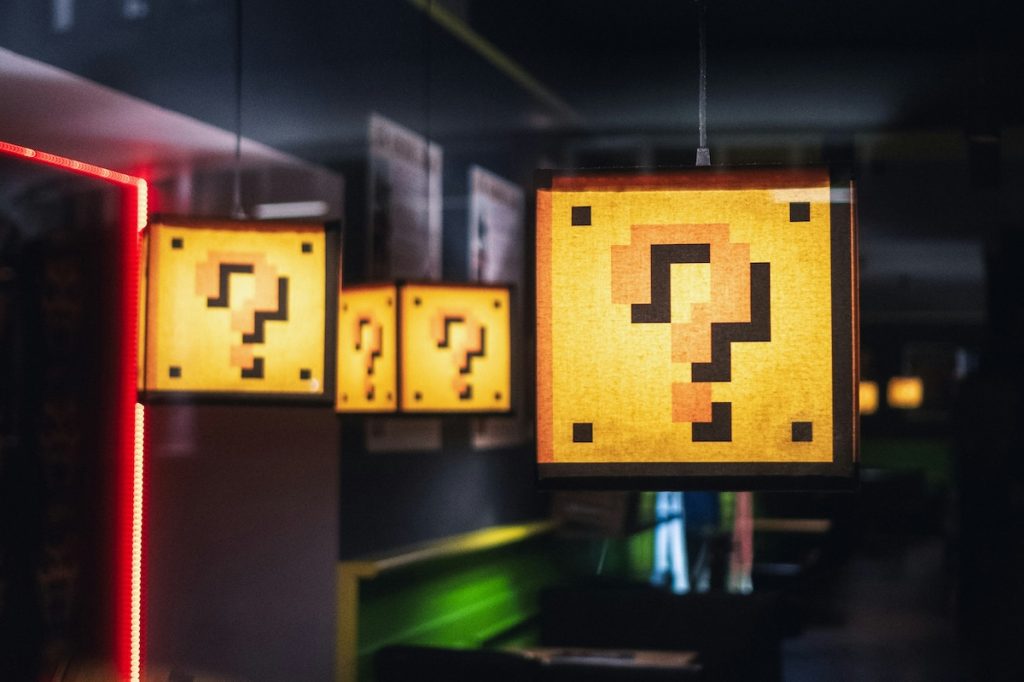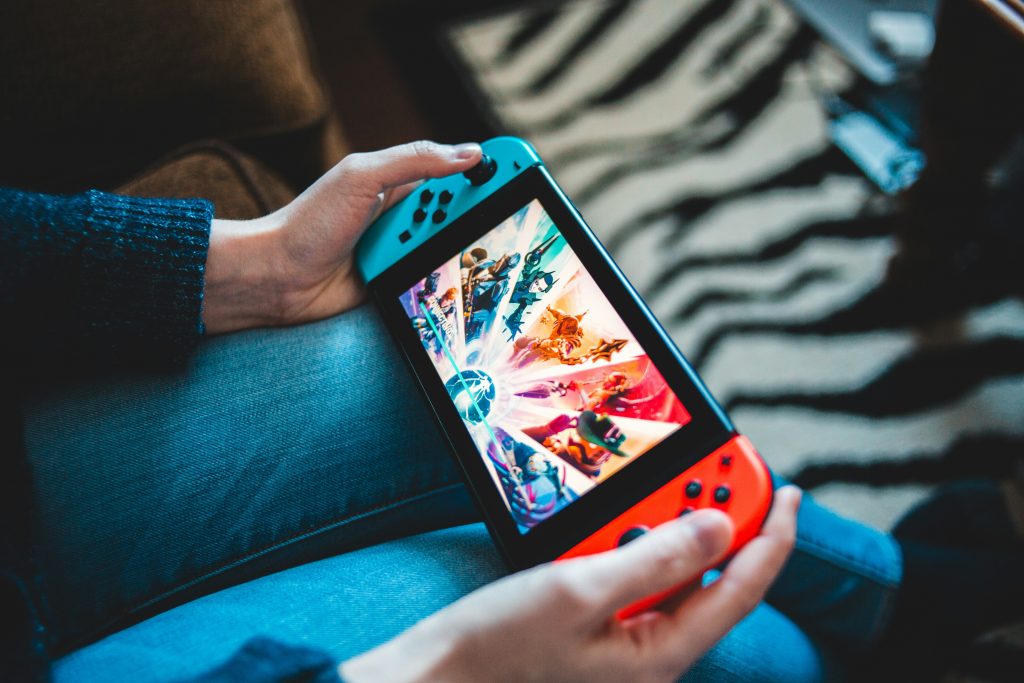Digital games for physical and mental health are not a new phenomenon. In fact, there is much research exploring the effectiveness of games when used to support a variety of physical and psychological health experiences (Ceranoglu, 2010; Colder Carras et al., 2018; Douris et al., 2012) and within the Woodland we have covered the topic a few times for example: serious games for mental health and Game interventions for youth depression and anxiety.
There is however nuance here regarding the types of games that feature in these discussions. A large amount of research explores serious games (“applied games”). These are games which are designed specifically towards a strategic end goal for patient/user outcomes, rather than the use of recreational or commercial games (“casual games”), which are not specifically designed for supporting health-related outcomes. As such, the derived benefits from these different types of games may be distinct, alongside the mechanisms that underly their effectiveness. For example, any type of game which is engaging may provide distraction from symptoms (Burns-Nader et al., 2017; Dwairej et al., 2018). However, serious games that are designed to target a particular condition are likely to hold alternative benefits like acceptance and literacy, better self-monitoring and regulation, and motivating health-related behaviours.
Because of this, we were pleased to see this new paper by Wols et al. (2024) which provides a systematic review of studies exploring the effectiveness of games for young people’s mental health, with a clear distinction between applied and casual types of games to help elucidate these insights more specifically.

Wols et al.’s (2024) systematic review is useful in looking at applied games and off-the-shelf casual games.
Methods
Following PRISMA guidelines, the authors searched three databases for randomised controlled trials (RCTs) that studied the effect of playing a digital game on mental health outcomes among young people (with a mean age between 6-24 years old). Screening and data extraction of included studies was undertaken by two independent reviewers, with kappa values ranging from 0.61 and 0.78. The reference lists of the final included studies and relevant reviews were also screened to reduce the likelihood of a study being missed.
The authors conducted a narrative synthesis of the study findings, as heterogeneity between studies made a meta-analysis inappropriate. However, they also calculated effect sizes (Cohen’s d) of post-treatment scores between groups and created forest plots to help showcase patterns across studies.
Study quality was assessed using the revised Cochrane risk of bias tool for RCTs; of the included studies, 75 were deemed low risk, 57 moderate risk, and 13 high risk.
Results
The systematic review identified 145 relevant articles, which were grouped into (sub)clinical populations (n = 75) and (mentally) healthy populations (n = 70). Studies in the clinical samples predominantly focused on Attention Deficit Hyperactivity Disorder (ADHD; k = 22) and anxiety (k = 17), whereas studies on healthy populations mostly focused on anxiety reduction (k = 24) and mental health traits (k = 32).
Overall, findings indicate that most studies explored applied games rather than casual games, and that these were relatively equally split between (sub)clinical and healthy populations.
In general, applied games were equally as effective as active control conditions, and more effective than passive control conditions for (sub)clinical populations (although it is worth noting that these different controls were not well-defined in the paper). Put another way, it seems like engaging with an applied game could potentially have comparable benefits to engaging with more traditional therapies. However, findings were mixed, with some studies indicating that applied games were not more effective than passive control conditions, particularly in the context of ADHD and depression. The authors suggest that this could be because “both ADHD and depression are highly heterogeneous syndromes with numerous biological and neurological correlates“. There was also some evidence that casual games may be as effective as both applied games and active control conditions, but far fewer studies investigated these comparisons.
In the context of healthy populations, findings were much more varied and harder to interpret. However, there was some evidence that the use of (mainly) casual games for gaming distraction were equally or better than standard care for managing anxiety in medical settings.
The authors note that although studies which included a passive control condition generally elicited stronger effects, studies with active control conditions were considered more scientifically rigorous in respect of helping elucidate the specific mechanisms of games that prompt changes in mental health outcomes. Further, effect sizes seemed more robust when outcome measures corresponded to state-like constructs (situational anxiety, affect) compared to more trait-like constructs.

There is promising evidence of using casual games for situational or in-the-moment experiences.
Conclusions
This systematic review has emphasised the wide range of research there is in relation to using digital games in both healthy and clinical populations. This is good and bad. It is good that research is embracing the use of digital platforms, however the bad news is that there is a lack of consistency in relation to definition of ‘applied games’, variation in evaluation of impact and a lack of consistency in outcome measures. This creates a melting pot of research that we are still waiting to come to the boil.
The early findings suggest that there may be merit in using digital games within the youth mental health context. It is currently unclear where the role of applied or casual games lies within this.

There may be merit in using digital games within the youth mental health context but does it have to be expensive specifically developed apps?
Strengths and limitations
There are strengths of this research, including following the PRISMA guidelines to ensure rigour, and the focus on RCTs, which arguably are considered the gold standard within research design and in informing health practice. Limiting the field of papers to age range 6-24 allowed the review to be targeted in age to help balance out the rather wide ‘review question of ‘effectiveness of digital applied and casual games for improving mental health’
Risk of bias was assessed using the Cochrane risk of bias tool for RCTs however, out of the 145 papers, 13 were deemed to have a high overall risk of bias. Around a sixth of the included papers showed moderate to high risk of bias due to missing outcome data, bias in measurement of the outcome and/or bias in selection of the reported result; weakening the overall pool of results.
Finally for strengths, it is commendable regarding the scope of populations covered within the paper and therein offering a comprehensive overview of how these findings may generalise.
In relation to limitations the results produced a markedly heterogeneous group of papers which meant that the authors weren’t able to do a meta-analysis. They did complete Cohen’s d effect sizes to try and create a standardised statistical comparison for each study and I personally found the use of Forest plots (available in Appendix A Figures A.4 to A.16 ) useful to be able to see the wide range of calculated effect sizes of the studies in a range of conditions; many crossing ‘0’ between applied and casual games. There will be queries as to how reliable the calculation of the effect size will be and this remains open to debate.
The authors themselves noted that they did not dig down in the analyses to explore the effects of applied and casual games on specific mental health outcomes. As such, these findings currently cannot inform the basis for specific treatment guidelines or plans and should not be used in this way by practitioners. Additionally, also as noted by the authors, the effect sizes were only calculated based on post-test data and so not possible to determine the magnitude or scope of within-person change from pre-to-post test or the role of other control variables or covariates within this.

The findings currently cannot inform the basis for specific treatment guidelines or plans, but they do highlight the lack of standardisation in current research.
Implications for practice
As mentioned above these findings currently cannot inform the basis for specific treatment guidelines or plans and should not be used in this way by practitioners. However, it does show that there is promising evidence of using casual games for situational or in-the-moment experiences which might benefit from games being used as an enjoyable distraction e.g. mitigating against situational anxiety within pre-operative procedures, or providing mood-boosting activities during prolonged hospital visits.
Within the research to date there does not appear to be compelling evidence that applied versus casual games have significantly more benefit for clinical populations. This does raise the question about whether it is cost-effective to be developing specified applied games when off-the-shelf ones may serve largely equivalent benefits? More research is definitely necessary in relation to using casual games in clinical populations; this could then lead to potential wider applications of these as part of proactive mental health management practices.
It is very unlikely that ‘one size fits all’ in relation to games and so it is still important to ensure that thought is given to what are the most suitable types of games to be used in differing populations, in line both with legal frameworks, developed guidelines and also from the perspective of player experience

There are interesting avenues for future research including better understanding from a user-experience perspective of what features or mechanics of games might be especially beneficial for mental health.
Statement of interests
No conflicts of interest to declare.
Links
Primary paper
Wols, A., Pingel, M., Lichtwarck-Ashoff., & Granic, I. (2024). Effectiveness of applied and casual games for young people’s mental health: A systematic review of randomised controlled studies. Clinical Psychology Review, 108, 102396.
Other references
Burns-Nader, S., Joe, L., & Pinion, K. (2017). Computer tablet distraction reduces pain and anxiety in pediatric burn patients undergoing hydrotherapy: A randomized trial. Burns, 43, 1203-1211
Ceranoglu, T. A. (2010). Video games in psychotherapy. Review of General Psychology, 14, 141-146.
Colder Carras, M., Van Rooij, A. J., Spruijt-Metz, D., Kvedar, J., Griffiths, M. D., Carabas, Y., & Labrique, A. (2018). Commercial video games as therapy: A new research agenda to unlock the potential of a global pastime. Frontiers in Psychiatry, 8, 300.
Douris, P. C., McDonald, B., Vespi, F., Kelley, N. C., & Herman, L. (2012). Comparison between Nintendo Wii Fit aerobics and traditional aerobic exercise in sedentary young adults. The Journal of Strength & Conditioning Research, 26(4), 1052-1057.
Dwairej, D., Obeidat, H., & Khalaf, I. (2018). The effectiveness of video distraction on children preoperative anxiety: an integrative literature review. Open Journal of Nursing, 8(3), 171-187.



